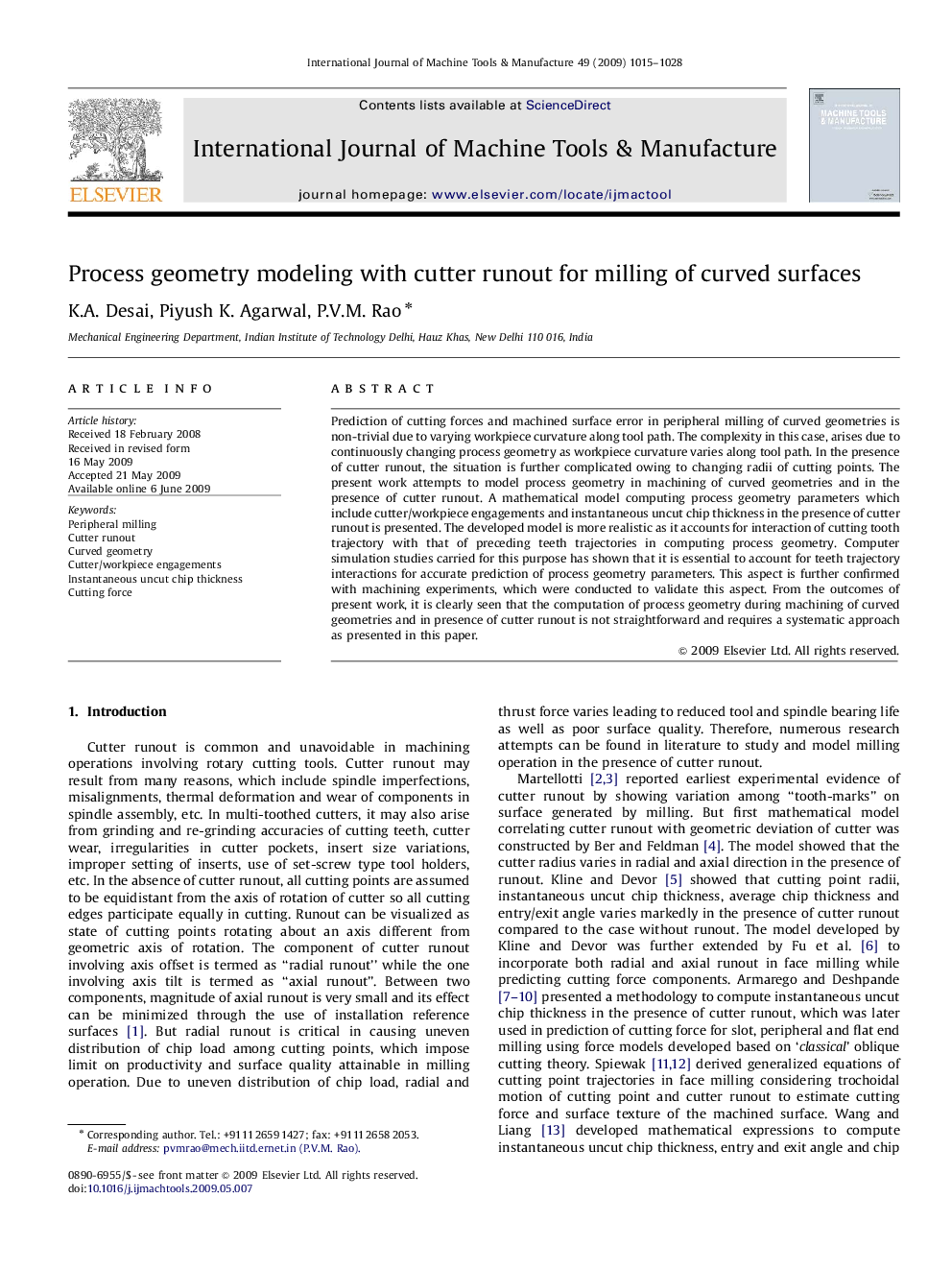| Article ID | Journal | Published Year | Pages | File Type |
|---|---|---|---|---|
| 780852 | International Journal of Machine Tools and Manufacture | 2009 | 14 Pages |
Prediction of cutting forces and machined surface error in peripheral milling of curved geometries is non-trivial due to varying workpiece curvature along tool path. The complexity in this case, arises due to continuously changing process geometry as workpiece curvature varies along tool path. In the presence of cutter runout, the situation is further complicated owing to changing radii of cutting points. The present work attempts to model process geometry in machining of curved geometries and in the presence of cutter runout. A mathematical model computing process geometry parameters which include cutter/workpiece engagements and instantaneous uncut chip thickness in the presence of cutter runout is presented. The developed model is more realistic as it accounts for interaction of cutting tooth trajectory with that of preceding teeth trajectories in computing process geometry. Computer simulation studies carried for this purpose has shown that it is essential to account for teeth trajectory interactions for accurate prediction of process geometry parameters. This aspect is further confirmed with machining experiments, which were conducted to validate this aspect. From the outcomes of present work, it is clearly seen that the computation of process geometry during machining of curved geometries and in presence of cutter runout is not straightforward and requires a systematic approach as presented in this paper.
